




Do you have a question about the Jeep Automobile and is the answer not in the manual?
| Brand | Jeep |
|---|---|
| Model | Automobile |
| Category | Automobile |
| Language | English |
Overview of the specialized utility vehicle's capabilities and handling.
Highlights the higher rollover risk compared to passenger cars.
Guidance on using the table of contents and index for information.
Explains warnings against unsafe procedures and cautions against damage.
Location and importance of the VIN.
Warning about how modifications can affect safety.
Explains the keyless ignition system components and operation.
Details the functions of the key fob and its integrated valet key.
Instructions on how to remove the ignition key.
Explains the chime reminder for the key left in the ignition.
Information on the Sentry Key Immobilizer System.
Information on obtaining and programming replacement keys.
Steps to program new Sentry Keys.
How the security alarm system monitors the vehicle.
System for locking/unlocking doors and activating panic alarm remotely.
Manual and power door lock operation.
How to engage and disengage child protection locks on rear doors.
Operation of power windows.
Feature for automatic window lowering.
Automatic window closing with anti-pinch protection.
How to open the liftgate.
Operation of the power liftgate.
Information on vehicle restraint systems.
Explanation of how lap/shoulder belts work.
Step-by-step guide to wearing seat belts.
How to adjust the shoulder belt anchorage.
Device to remove slack from seat belts in a collision.
System that alerts driver to buckle seat belt.
Recommendations for pregnant women using seat belts.
General advice on securing children in the vehicle.
Recommendations for infant and rearward-facing child seats.
Information on the LATCH system for child restraints.
Guidance on using vehicle seat belts for child restraints.
Recommended break-in procedures for the new engine.
General safety tips for vehicle operation.
Warnings and precautions regarding exhaust gases and carbon monoxide.
Routine checks for seat belts and airbag warning lights.
Routine checks for tires, lights, and fluid leaks.
Information on inside and outside mirror adjustments and features.
Hinged exterior mirrors designed to resist damage.
How to control exterior mirrors using the power mirror switch.
Mirrors heated to melt frost or ice, activated with rear window defrost.
Accessing and using lighted vanity mirrors.
Overview of the voice-activated, hands-free communication system.
How to use voice commands and navigate the UConnect™ system.
Features like answering, rejecting, and making calls.
How to handle multiple calls with the system.
Instructions for placing calls on hold and retrieving them.
Combining two calls into a conference call.
System features like language selection and emergency assistance.
How to change the system's language.
How to contact emergency services through the system.
How to access towing assistance.
Tips for optimizing voice recognition performance.
Flowchart of voice commands for system navigation.
Flowchart for phonebook operations.
Adjustments for manual and power seats.
How to adjust the seat forward or rearward.
How to adjust the seatback recline.
How to adjust head restraints to reduce whiplash injury.
Operation of heated seats for comfort.
How to fold and tumble the second row seat.
How to lower and raise the third row seat.
How to program and recall seat, mirror, and pedal settings.
How to recall stored memory positions.
Automatic seat positioning for easier entry and exit.
Operation of various exterior and interior lights.
System that automatically controls headlights based on ambient light.
System that automates high beam control.
Adjusting instrument panel and interior light brightness.
Operation of turn signals and lane change signaling.
Operation of front and rear wipers and washers.
Intermittent wiper speeds adjustable by vehicle speed.
System that automatically activates wipers based on moisture.
How to adjust the steering column tilt and length.
Feature to move pedals closer to the driver.
Operation of the cruise control system.
Overview of the electronic brake control system.
How ABS maintains vehicle control during braking.
System that monitors wheel spin and reduces power.
System that optimizes braking capability during emergency maneuvers.
System that anticipates and reduces wheel lift potential.
System that enhances directional control and stability.
System that recognizes and counteracts trailer sway.
System that assists the driver when starting on a hill.
System that maintains vehicle speed while descending hills.
System providing visual and audible parking assistance.
System allowing a view of the rear of the vehicle.
How to activate the rear camera mode.
Contains garage door opener, sunglass storage, and sunroof switches.
HomeLink system for operating garage doors and gates.
Steps to program HomeLink buttons.
How to operate programmed HomeLink buttons.
Operation of the power sunroof.
How to open the sunroof automatically.
How to close the sunroof automatically.
Feature that detects obstructions during closing.
Perception of pressure or sound due to airflow.
Location and use of power outlets.
Inverter outlet for powering small appliances.
Locations of cup holders.
Features related to the cargo area.
Reversible panel for added utility and its latches.
Operation of rear window wiper and washer.
Controls for rear wiper and washer.
How to activate the rear window defroster.
Information on external racks and load limits.
Overview of the instrument panel layout and components.
Diagram and labeling of the instrument cluster gauges.
Detailed explanation of each indicator light and gauge.
Overview of the driver-interactive display system.
List of messages and indicators displayed by the EVIC.
How the system reminds the driver about oil changes.
Features for tracking average fuel economy, distance, and time.
How to view compass readings and outside temperature.
How the compass self-calibrates.
How drivers can set and recall vehicle features.
How to select the display language for the system.
Feature for automatic door locking based on speed.
Feature to automatically unlock doors when the driver exits.
How remote keyless entry unlocks doors.
Feature to activate the horn when locking doors.
Feature to flash turn signals when locking/unlocking doors.
Feature to keep headlights on for a set time after exiting.
Automatic deactivation of high beams under certain conditions.
Feature to turn headlights on automatically with wipers.
System that automatically activates wipers based on moisture.
Automatic seat positioning for easier entry and exit.
Feature that keeps certain accessories active after ignition is off.
Feature that activates headlights when doors are unlocked.
Feature to assist in starting on a hill.
How to change units between English and Metric.
Displays system status messages.
System that warns of low tire pressure.
General information about radio reception.
Factors affecting radio reception.
Explains AM and FM radio signal types.
Operating instructions for the radio and CD/DVD changer.
How to operate the radio.
How the electronic volume control works.
How to search for radio stations.
How to scan for radio stations.
How to operate the Hands-Free Phone feature.
How to operate the Hands-Free Phone feature.
Steps to set the clock.
How to adjust for daylight savings time.
Feature to display time when the radio is off.
How to select the correct time zone.
Overview of the multimedia system features.
How to operate the satellite radio.
How to use the hands-free phone system.
Connecting and using iPods with the vehicle system.
Steps to connect an iPod to the UCI connector.
How to control an iPod using the radio controls.
How the iPod operates in play mode.
How to use the TUNE/SCROLL knob to control the iPod.
Information on Sirius Satellite Radio service.
How to activate the satellite radio service.
Tips for ensuring optimal satellite antenna reception.
Reasons for interrupted satellite reception.
How to operate satellite radio.
How to search for channels in satellite mode.
How to scan for satellite channels.
How to select music types.
How to access setup options.
How to set radio station presets.
How to tune to preset stations.
How to switch between radio and disc modes.
How to play CDs and MP3s.
How to eject CDs from the player.
How to navigate tracks on a CD.
Controls for the heating/air conditioning system.
Operation of manual climate controls.
How to adjust blower speed and operation.
How to select the desired air temperature.
How to select airflow distribution modes.
How air is directed for defrosting.
Airflow distribution for defrost and floor settings.
Airflow through floor outlets.
Airflow through panel and floor outlets.
Airflow through panel outlets.
How to use the recirculation feature.
How to turn on the air conditioning.
How the climate control system maintains interior comfort.
Manual override features for climate control.
Causes and prevention of window fogging.
Operation of the manual rear climate control system.
How third-row occupants control rear airflow.
How third-row occupants control rear temperature.
How third-row occupants control rear airflow modes.
Steps to take before starting the vehicle.
Standard procedure for starting the engine.
Recommendations for starting in extreme cold.
What to do if the engine doesn't start.
Actions to take after the engine has started.
How to use the engine block heater.
Information on automatic transmission operation.
How to manually override the shift lock.
System preventing gear shift without brake application.
Information on the transmission's shift schedule.
Explanation of transmission gear positions.
Technique for freeing a stuck vehicle.
How to operate the four-wheel drive system.
Operation of the Quadra-Trac I system.
Operation of the Quadra-Trac II system.
Description of different shift positions.
Procedures for shifting between 4WD modes.
Features of the Quadra-Drive II system.
Advice for driving on paved roads.
Advice for driving off-road.
Guidance on when to use 4WD Low Range.
Precautions for driving through water.
Tips for driving in various conditions.
Advice for climbing steep hills.
How to maintain traction when descending hills.
Checks to perform after off-road driving.
How to set and release the parking brake.
How the ABS system aids vehicle control.
Information on the power steering system.
Feature for improved fuel economy by shutting off cylinders.
General information on tire safety.
Explanation of tire sidewall markings.
How to find and interpret the TIN.
Information on tire placard and proper pressure.
General information about tires.
Importance of proper tire inflation pressure.
How to check and adjust tire pressure.
Requirements for high-speed driving.
Warnings about mixing radial tires with other types.
Warning against spinning wheels when stuck.
How to determine when tires need replacement.
Factors affecting tire service life.
Recommendations for choosing replacement tires.
Potential issues from poor suspension alignment.
Guidelines for using tire chains.
Benefits and frequency of tire rotation.
System that warns of low tire pressure.
Information on recommended fuel types.
Information on cleaner-burning gasoline.
Information on gasoline blended with oxygenates.
Warning about MMT additive in gasoline.
Information on fuel additives.
Guidelines for maintaining fuel system performance.
Precautions regarding carbon monoxide from exhaust.
Information specific to flexible fuel vehicles.
General information about E-85 fuel.
Vehicle operation on different fuel types.
Engine oil requirements for different fuel types.
Starting considerations for E-85 fuel.
Information on vehicle loading limits.
Contents of the vehicle certification label.
Definition of GVWR and its importance.
Definition of payload capacity.
Maximum permissible load on axles.
How to determine maximum loading conditions.
Safety tips and information for towing trailers.
Definitions to help understand towing information.
Total allowable weight of the vehicle.
Weight of the trailer including cargo.
Total permissible weight of vehicle and trailer combined.
Maximum capacity of front and rear axles.
Downward force exerted on the hitch ball by the trailer.
Industry standard for maximum trailer weight by hitch class.
Maximum trailer weights towable for given drivetrain.
How to load a trailer for stability.
Guidelines for proper break-in of new vehicle drivetrain.
Tire considerations for towing.
Information on trailer brake systems.
Requirements for trailer lights and wiring.
Recommendations for automatic transmission when towing.
When to use or not use speed control while towing.
Actions to reduce engine and transmission overheating.
Guidelines for recreational towing.
Conditions for recreational towing of 2WD models.
Recreational towing is not allowed for this model.
Precautions for towing these models.
How to activate the emergency warning system.
Steps to take if the engine overheats.
Instructions for changing a tire.
Location of the jack and tools.
How the spare tire is stowed.
How to remove the spare tire.
Steps to take before jacking the vehicle.
Step-by-step guide to using the jack.
Procedure for starting a vehicle with a discharged battery.
Location and use of emergency tow hooks.
Guidelines for towing a disabled vehicle.
Towing restrictions for 2WD models.
Towing recommendations for 4WD models.
Diagram identifying components in the 3.7L engine compartment.
Diagram identifying components in the 4.7L engine compartment.
Diagram identifying components in the 5.7L engine compartment.
Overview of the vehicle's diagnostic system.
Explanation of the gas cap warning message.
Information on emissions testing requirements.
Importance of using genuine Mopar parts.
Benefits of having authorized dealer service.
Overview of required maintenance services.
How to check and maintain engine oil level.
Proper procedure for checking engine oil level.
Recommended intervals for oil changes.
Recommended engine oil types and standards.
Recommended oil viscosity for different engines.
Manufacturer's recommendation against oil additives.
Proper disposal of used oil and filters.
Recommendation for replacing the oil filter.
How to inspect drive belts.
Importance of proper spark plug function.
Maintenance of spark plug wires.
Recommended intervals for air cleaner filter changes.
Requirements and maintenance for the catalytic converter.
Proper operation and maintenance of the PCV system.
Information on the maintenance-free battery.
Recommended service for the air conditioner.
How and when to check power steering fluid.
Lubrication points for body pivots and locks.
How to clean wheels and trim.
Cleaning upholstery and carpeting.
How to clean and preserve leather upholstery.
How to clean all glass surfaces.
How to clean instrument cluster lenses without scratching.
Location of the interior fuse panel.
Location of interior fuses.
Location and layout of underhood fuses.
Location and layout of integrated power module fuses.
Steps to protect the battery when storing the vehicle.
Types of bulbs for interior and exterior lights.
Instructions for replacing headlight bulbs.
Steps to replace headlight bulbs.
How to replace front turn signal bulbs.
How to replace front fog light bulbs.
How to replace rear lighting components.
How to replace the CHMSL bulb.
Table of fluid capacities for the vehicle.
Fluid, lubricant, or genuine part information for the engine.
Fluid, lubricant, or genuine part information for the chassis components.
Scheduled maintenance for emission control systems.
Oil change reminders and service intervals.
Table of required maintenance items and intervals.
Maintenance items to check at each oil change.
Details on spark plug replacement intervals.
Interval for replacing engine air cleaner filter.
PCV valve inspection and replacement intervals.
Inspection interval for transfer case fluid.
Replacement interval for top row spark plugs.
Replacement interval for spark plugs.
Transmission fluid change interval for heavy usage.
Transfer case fluid change interval for heavy usage.
Interval for flushing and replacing engine coolant.
Replacement interval for ignition cables.
Replacement interval for side row spark plugs.
Standard interval for transmission fluid and filter change.
Replacement interval for accessory drive belts.
Tips for getting service for your vehicle.
How to prepare for a service appointment.
Advice on making a list of vehicle problems.
Tips for making reasonable service requests.
Information on manufacturer assistance.
Details on manufacturer's warranties.
Information on available Mopar parts.
How to report safety defects to NHTSA.
How Canadian customers can report safety defects.
How to order manuals.
Explanation of DOT tire grading categories.
Explanation of the treadwear grade.
Explanation of tire traction grades.
Explanation of tire temperature grades.


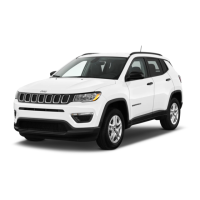

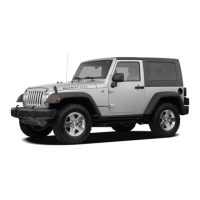
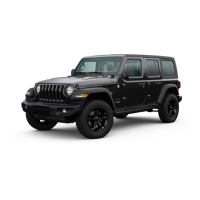


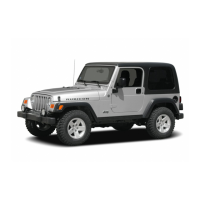

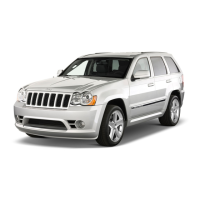
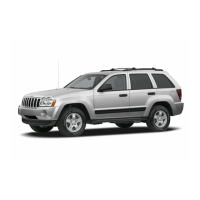
